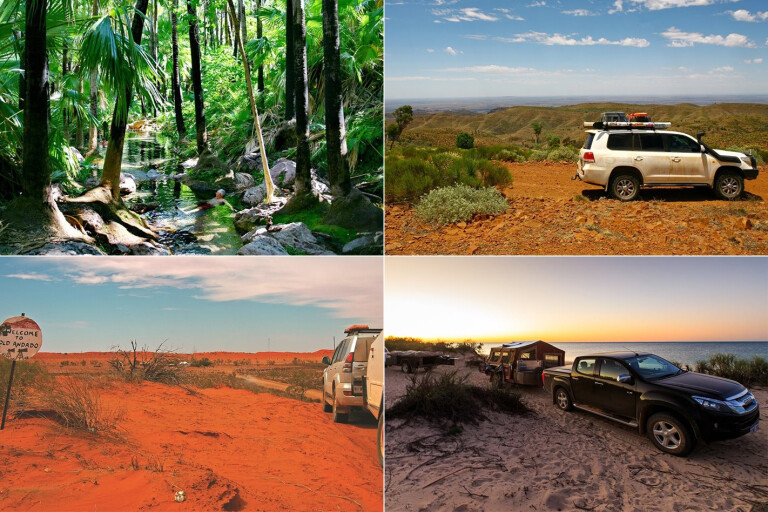
Station properties can offer travellers the ultimate outback experience. Here’s seven of the best.
EL QUESTRO WILDERNESS PARK, KIMBERLEY, WA
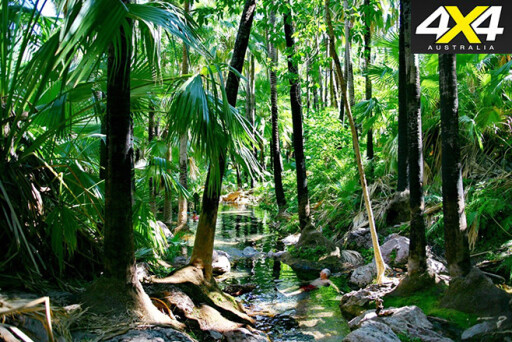 If you’d like to see the Kimberley, but are concerned that your vehicle or camper trailer might not be up to the rigours of the Gibb River Road, then El Questro is the place for you.
If you’d like to see the Kimberley, but are concerned that your vehicle or camper trailer might not be up to the rigours of the Gibb River Road, then El Questro is the place for you.
With bitumen/2WD access from Kununurra, you can set up base in a choice of campsites then explore some of the most beautiful gorges in the Kimberley unencumbered.
At one million acres in size, the diversity of El Questro’s landscape is matched only by the range of activities on offer – from a relaxing soak in the warm thermal pools of Zebedee Springs to an exhilarating climb in your 4WD to Branco’s Lookout, or an energetic hike through the magnificent El Questro Gorge and the serenity of floating along the Pentecost River through Chamberlain Gorge as the sun sets.
Walk, drive, ride, boat, you can even hire a helicopter: there are many ways to see so many beautiful things in one location.
HOME VALLEY STATION, KIMBERLEY, WA
 Home Valley Station caters not only for travellers on the Gibb River Road, but for Indigenous students and trainees from many communities across the Kimberley.
Home Valley Station caters not only for travellers on the Gibb River Road, but for Indigenous students and trainees from many communities across the Kimberley.
Owned by the Indigenous Land Corporation, the station hosts up to 14 full-time students in Indigenous tourism, hospitality and horticultural traineeships, as well as offering a range of apprenticeships within its commercial kitchen and mechanical workshop.
As well as being a working cattle station and training facility, Home Valley Station offers a range of accommodation, tours and activities for the traveller. Horse riding, fishing, helicopter and 4WD tours are all on offer and there are numerous self-guided walking trails.
The Dusty Bar & Grill is the epicentre of the social scene at the station. From a pre-dinner drink to a full meal from the a-la-carte menu, it has a great atmosphere with its decor of station memorabilia. Most evenings, there is also free entertainment either in the bar or around the adjacent campfire. Perfect!
WILLOW SPRINGS STATION, FLINDERS RANGES, SA
 Willow Springs is a working sheep station of about 70,000 acres, abutting the Flinders Ranges National Park. First taken up by the Reynolds family in 1952, Willow Springs Station supported Steve Reynolds and his three sons for 30 years. In 1985, Brendan Reynolds and his wife Carmel took the first steps in diversifying into the tourism industry. They developed the existing shearers’ quarters into visitor accommodation, as well as establishing a number of private campsites on the station.
Willow Springs is a working sheep station of about 70,000 acres, abutting the Flinders Ranges National Park. First taken up by the Reynolds family in 1952, Willow Springs Station supported Steve Reynolds and his three sons for 30 years. In 1985, Brendan Reynolds and his wife Carmel took the first steps in diversifying into the tourism industry. They developed the existing shearers’ quarters into visitor accommodation, as well as establishing a number of private campsites on the station.
A major highlight of their endeavours would have to be the magnificent Skytrek, which opened in 1995. The 60-odd kilometres of 4WD track winds its way around the station and up and over Mt Caernarvon, providing magnificent views of the Flinders Ranges. They also provide a booklet detailing the many points of natural, pastoral, Aboriginal and geological interest that are marked along the way. It’s six hours of your life that you’ll never forget.
LORELLA SPRINGS WILDERNESS PARK, SAVANNAH WAY, NT
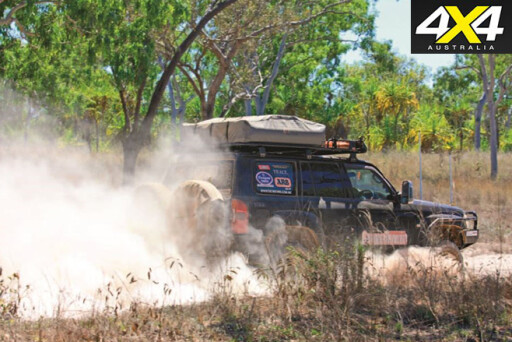 Lorella Springs Wilderness Park is owned by the Walker family. The park itself is a one million acre former cattle station of largely unspoilt wilderness facing the Limmen Bight, dotted with billabongs, thermal springs, waterfalls and bird-filled wetlands.
Lorella Springs Wilderness Park is owned by the Walker family. The park itself is a one million acre former cattle station of largely unspoilt wilderness facing the Limmen Bight, dotted with billabongs, thermal springs, waterfalls and bird-filled wetlands.
Eighty natural springs have been identified on the property, and they are claimed to flow through the subterranean waterways from New Guinea to the Gulf of Carpentaria. This makes Lorella the best and safest place to swim on the gulf, with a range of croc-free hot and cold springs, waterfalls, deep plunge pools and everything in between.
The property is bordered by national park on two sides, the Limmen Bight of the Gulf of Carpentaria and Aboriginal land. These days, the property is used primarily as a tourism venture, with the bulk of inward traffic coming through the main gates, plus an airstrip for fly-in visitors. There are still about 1000 head of cattle behind wire, with a periodic muster to round up the wild cleanskins that wander on to the property.
The Walker family has cut 4WD tracks to help adventurers explore the attractions on offer. Visitors can drive the Billabong Loop around Rosie Creek, paddle the canoe at Flying Fox Swamp, climb the Tawallah Range for spectacular views, and walk a few feet off the beach to scoop up massive mud crabs or haul in sizeable barramundi.
MT IVE STATION, GAWLER RANGES, SA
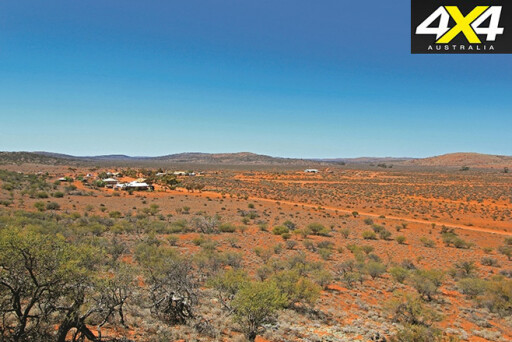 Mt Ive Station is a 250,000 acre working sheep property set against the volcanic rock of South Australia’s Gawler Ranges, said to be over 1500 million years old.
Mt Ive Station is a 250,000 acre working sheep property set against the volcanic rock of South Australia’s Gawler Ranges, said to be over 1500 million years old.
The property provides a place for campers to take in the raw beauty of the ranges while still enjoying the comforts of powered sites, fuel, water and a licensed kiosk. It offers a number of 4WDing tracks, including a private access route to Lake Gairdner – one of Australia’s most pristine salt lakes.
To access the station, the best passage is from Iron Knob on the Eyre Highway, travelling on well-formed unsealed surfaces, although there are other options from Kimba, the Gawler Ranges National Park or from the north via Kingoonya.
The campground is well laid out, with centralised facilities and powered and unpowered sites shaded by young gums. A gazebo and barbecue area with tables and seating is close to the powered sites, while another utility room with a fridge and barbecue services the other areas.
Facilities include a recreation room and camp kitchen, while amenities include flushing toilets and hot showers, fed from one of the largest donkey systems we’ve ever seen.
The station offers a number of optional tracks to explore either by conventional or 4WD vehicle. Mud maps, trip notes and a key provide access to and highlight the points of interest, as well as supplementary information about the landscape.
OLD ANDADO STATION, SIMPSON DESERT, NT
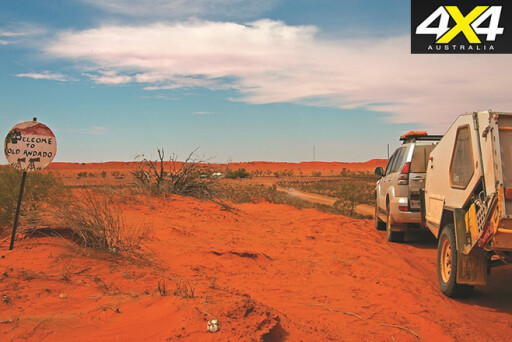 Old Andado Station is the result of a lifetime of hard work and perseverance by the late Molly and Mac Clark.
Old Andado Station is the result of a lifetime of hard work and perseverance by the late Molly and Mac Clark.
The Clarks moved to the original Andado cattle station in 1955 to build a pastoral business. They rebuilt the original homestead as a tourism venture, showing travellers the hardships of living in such a remote location. The floors were made from cement over ash and fat, with cement walls. The roof was originally crafted from a sapling structure topped with grass thatch, and later replaced with white-washed corrugated iron. Ants, snakes, spiders and other animals were common.
The original building had no windows, plumbing or power. Water had to be carried to the kitchen, bathroom and laundry and kerosene was used for lamps and powering the fridge. Summer temperatures were often over 50°C and access was slow and arduous, via a goat trail of two tyre tracks meandering through the scrub. It wasn’t until the 1970s that a road was cut from Alice Springs to Andado via Santa Teresa.
Mac died in a light plane accident in 1978, leaving Molly (pictured above left) to press on alone. In addition to the climatic challenges, the property was subject to brucellosis and tuberculosis testing by the government in the early 1980s, resulting in the loss of all stock and, ultimately, the property.
But rather than accept defeat, Molly endured the hard times and was able to secure a Crown Lease of a small area around the original homestead. She called this Old Andado and founded a new tourism business. She set up camping facilities, cooked meals for visitors and provided personal guided tours of the homestead.
In 1993, Old Andado was listed on the Heritage Register.
After Molly passed away in 2012, Old Andado passed into the hands of her five grandchildren and the property is now maintained for visitors by volunteer caretakers.
NINGALOO STATION, CORAL COAST, WA
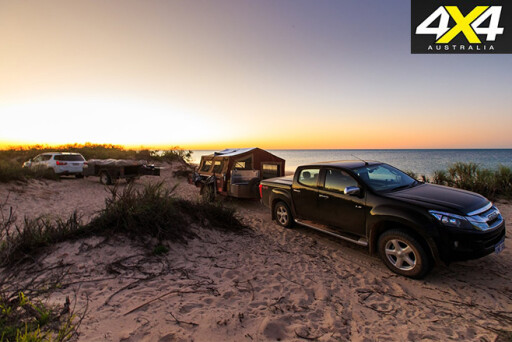 Ningaloo Station is 15sq km of pastoral land and is wilderness camping at its best. The spectacular bush camp is located south of Exmouth and provides access to the Cape Range National Park via Yardie Creek. The campsites sit near deserted beaches of pristine sand, waters and reef, providing the ultimate place to detach from the hustle and bustle of daily life.
Ningaloo Station is 15sq km of pastoral land and is wilderness camping at its best. The spectacular bush camp is located south of Exmouth and provides access to the Cape Range National Park via Yardie Creek. The campsites sit near deserted beaches of pristine sand, waters and reef, providing the ultimate place to detach from the hustle and bustle of daily life.
Ningaloo Reef is just metres offshore, so there’s plenty of sealife around and, if you’re lucky enough, you might just get a visit from a few of the local dolphins that like to frolic in the shallows. It’s 4WD-access only along corrugated roads and soft sand to campsites.
Access is via an unmarked turn-off from the Manilya-Exmouth Road. This area doesn’t have any facilities so you’ll need to be fully self-sufficient with water, food, fuel, equipment, and an air-compressor.
The property has been managed by the Lefroy family since 1934, and they are rightfully protective of their piece of paradise, so ensure you are respectful at all times.
Do your bit and keeps things tidy and clean and respect the property and the owners – don’t take photos of the homestead and surrounds without asking permission.

COMMENTS